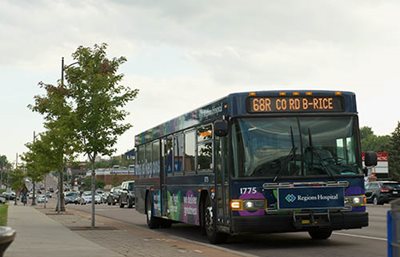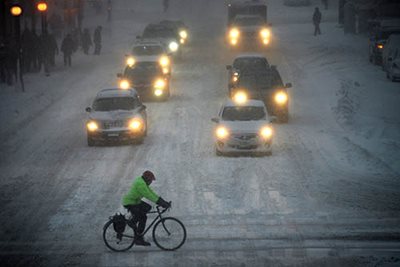 If you travel in the Twin Cities region, you are probably going to benefit from the $350 million in federal transportation investments the Metropolitan Council approved in December.
If you travel in the Twin Cities region, you are probably going to benefit from the $350 million in federal transportation investments the Metropolitan Council approved in December.
Every two years, the Met Council’s Transportation Advisory Board — made up of residents, business leaders, and elected officials from cities and counties in the region — develops a plan to allocate what’s known as “federal transportation formula funding.” That recommendation is then sent to the Met Council for agreement.
“Input at the local level is critical to the success of any plan, but it’s especially critical when you’re planning where to invest in transportation,” said Met Council Transportation Committee Chair Deb Barber. “You have to have the input from the communities you serve to know precisely which investments make the most sense.”
Region had 50% more transportation funding to work with
In this funding cycle, the Transportation Advisory Board had 50% more funding to work with after Congress passed the Infrastructure Investment and Jobs Act last year. For the first time in a decade, Congress increased funding available for programs that reduce congestion, make highways safer, and invest in bikeways and walkways. But in addition to those established programs, the bill also created a new program aimed at fighting climate change by investing in transportation programs that cut back on carbon emissions.
Over the past 10 years, the Twin Cities region has received about $200 million every two years to distribute for transportation investments. Had that amount of funding remained steady, the Met Council would have been able to fund 44 projects across the region. However, with up to $350 million available this cycle, the Transportation Advisory Board was able to grant federal funding to 91 total projects across the region; 55 cities and all 7 metro area counties will benefit.
Improving transit from south to north in Saint Paul
One of the biggest single projects is $25 million for the future METRO G Line bus rapid transit. This line will provide faster and more reliable transit service in the corridor that connects Robert Street on Saint Paul’s West Side to Rice Street in the North End neighborhood. A second $7 million investment in a Rice Street reconstruction project will leverage another $29 million in local funding, allowing both projects to coordinate construction activities.
Other highlights of the 2022 awards

Bicycle and pedestrian projects
- Safe Routes to Schools — 10 schools across the region to help kids walk and bike to school (all 10 project requests were funded)
- Saint Paul — Point Douglas Regional Trail
- Scott County — Merriam Junction Regional Trail, which connects regional trail systems between Scott and Carver Counties over the Minnesota River
Transit and travel demand management (TDM) projects
- Washington County — 494 park-and-ride structure along the METRO Gold Line
- Minnesota Valley Transit Authority — Apple Valley Transit Station modernization
- SouthWest Transit — SW Prime north expansion of dial-a-ride service for areas without regular bus service
Roadway projects including multimodal elements
- Anoka County — Highway 65 intersection improvements
- City of Burnsville — Highway 13 and Nicollet Avenue intersection improvement
- Hennepin County — Franklin Avenue reconstruction in Minneapolis
All these projects are designed with safety in mind, but the number of projects specifically designed to improve roadway and pedestrian safety more than doubled. That work will be evident in the 480 intersection improvements across the region, resulting in an estimated 680 fewer crashes.